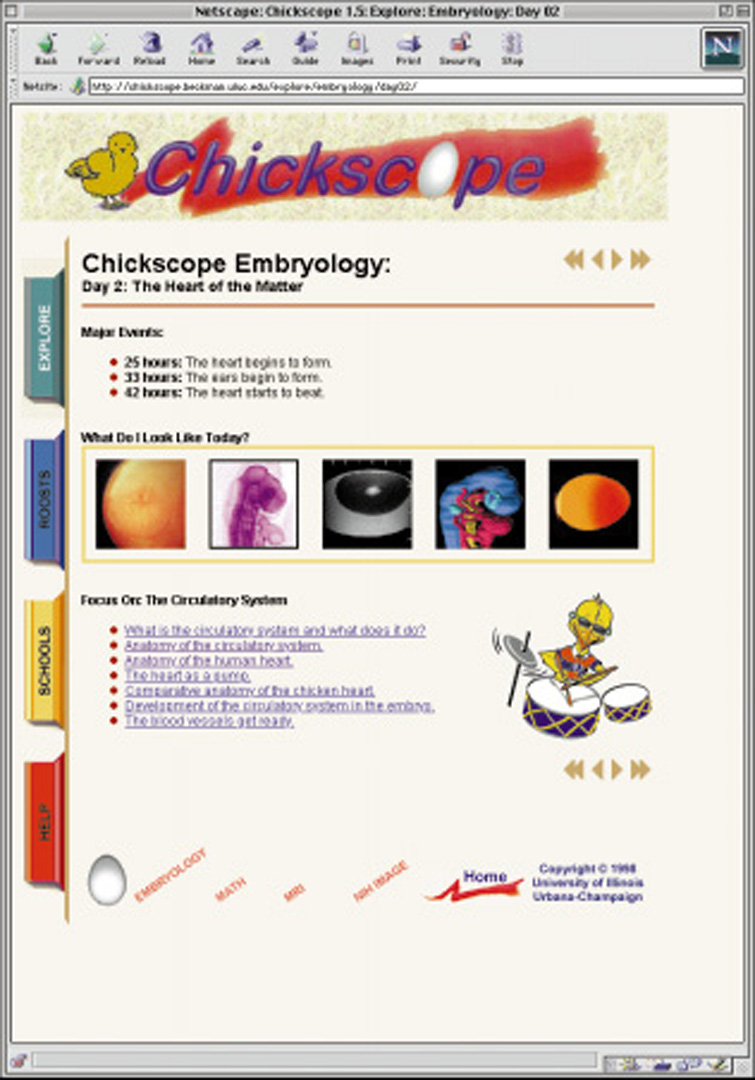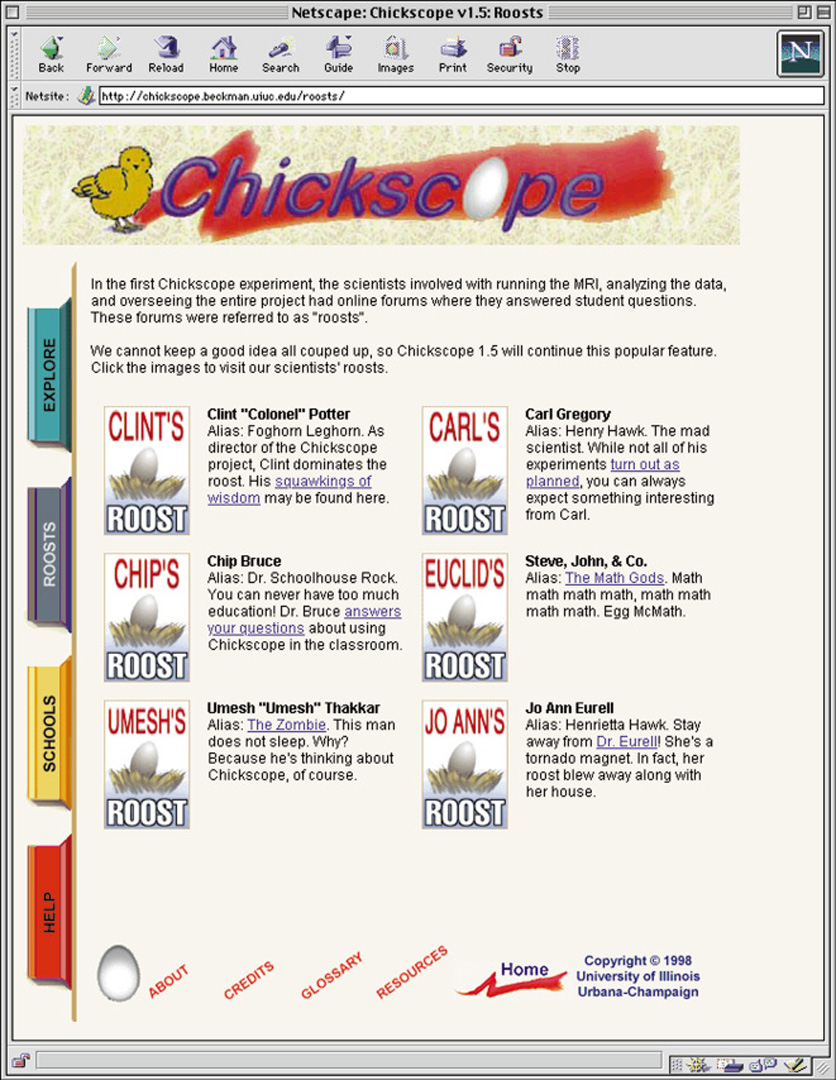“Chickscope: An Innovative World Wide Laboratory for K-12 Classrooms” by Fossum, Bruce, Thakkar, Potter, Weber, et al. …
Conference:
Type(s):
Title:
- Chickscope: An Innovative World Wide Laboratory for K-12 Classrooms
Presenter(s)/Author(s):
Abstract:
In the spring of 1996, 10 classrooms ranging from kindergarten through high school participated in Chickscope, a collaborative 21-day chick embryology project initiated by the University of Illinois at Urbana-Champaign.
Each classroom was given fertilized eggs, incubators, and educational materials on egg science and candling, courtesy of the 4-H Cooperative Extension Program. At the same time each day, a fertilized egg was placed in a magnetic resonance imaging instrument at the Beckman Institute Magnetic Resonance Imaging Laboratory. Through an interactive Web site, students remotely controlled the MRI device to obtain images of the developing chick. The Web site was developed by the Beckman Institute Visualization Facility, the Magnetic Resonance Imaging Laboratory, and the National Center for Supercomputing Applications.
The classrooms acquired daily images of the egg and shared their observations, predictions, and questions via the WWW. Through the Chickscope Web site, they received educational material, daily reports of the development of the chick, and sample MRI images for the day.
The goal for the Chickscope project was not only to provide students and teachers with access to the MRI system over the Internet, but also to provide them with the supporting infrastructure that is usually reserved for scientists. We realized our goal when the students and teachers became part of the scientific community by sharing their learning exercises, observations, predictions, and questions.







